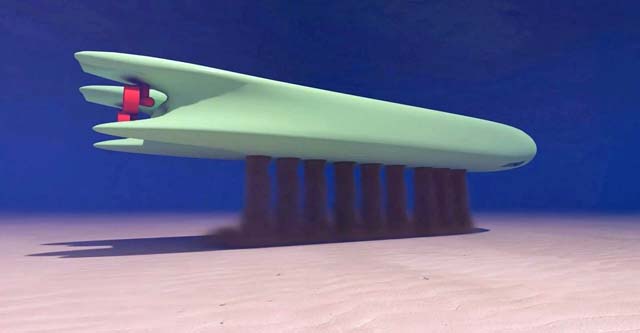Dutch naval architect C-Job, in a consortium with MARIN, has been successful in a tender process for the Dutch Rijkswaterstaat ‘Innovaties in de Kustlijnzorg’ (IKZ) programme. with a design for sustainable and cost-effective ‘Solution for Coastal Care’, based on C-Job’s AUMD (autonomous underwater maintenance dredger) concept.
As part of the project, C-Job has been commissioned to develop the Autonomous Low Energy Replenishment Dredger (ALERD). This built on the AUMD but with a different operational profile; coastal replenishment instead of maintenance work in ports and harbours.
C-Job Autonomous Shipping research lead engineer Rolph Hijdra said: “The design of the submersible ALERD is based on the AUMD, but its purpose is to deliver sediment to coastlines to protect the land in a sustainable manner. As with the AUMD, the hopper is designed to always be full of seawater or a mixture of water and sand / sediment, with discharge likewise taking place through the bottom doors in the hull.”
Following lifecycle assessment and an operational profile analysis C-Job will carry out further studies looking at the energy that will be required for stability and buoyancy control.
To achieve zero emissions requires both low energy requirements and a sustainable electrical energy supply. Reviewing the available options, Li-ion batteries and Proton Exchange Membrane Fuel Cell systems emerged as the best alternatives. Among the studies reviewed were a number that included simulations analysing variations in factors including different hopper volumes, operating speeds and different charging and bunker locations. These demonstrated that both power sources could deliver lower operational costs compared to the benchmark provided by the IKZ program. Therefore, the choice would depend on individual operational circumstances.
C-Job continues to research and promote the potential benefits of submersible dredgers and industry participants are showing an interest in the development process. Dredging in this way will undoubtedly bring with it a range of as yet unknown challenges compared to traditional dredging, but as the pressure for sustainable solutions grows and the cost of clean energy systems falls, the momentum in this direction can only increase.



